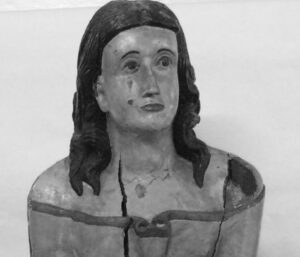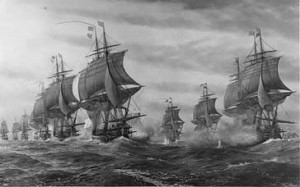Description
 Sail with the Royal Navy’s HMS Penelope, whose forlorn figurehead – now resident in London’s National Maritime Museum – represents the wife of Odysseus, renowned in ancient Greek mythology for her fidelity as she awaited the return of her husband from the Trojan War. Launched in 1829, Penelope saw service around South America and the west coast of Africa in the 1840s and 50s, during which time she was active in suppressing the illegal transatlantic slave trade.
Sail with the Royal Navy’s HMS Penelope, whose forlorn figurehead – now resident in London’s National Maritime Museum – represents the wife of Odysseus, renowned in ancient Greek mythology for her fidelity as she awaited the return of her husband from the Trojan War. Launched in 1829, Penelope saw service around South America and the west coast of Africa in the 1840s and 50s, during which time she was active in suppressing the illegal transatlantic slave trade.
The enduring practice of naming British ships after figures from classical mythology, and of adorning their prows with carved representations of these eponymous characters, ensured that generations of sailors and dockhands encountered at close quarters the gods and heroes of the ancient world as they went about making their daily living.
 In keeping with ship-naming traditions which reflected the classical education of many of the senior officers of the Royal Navy, HMS Penelope’s contemporaries included, among others, vessels named after Orestes, Hermes and Andromache. Yet steadfast Penelope might seem to be an unusual choice to accompany a crew of seafarers on their voyages; in the ancient traditions which originated with Homer’s Odyssey the mythological heroine remained firmly on dry land. By contrast, her husband’s nautical exploits after the fall of Troy kept him away from his homeland for a further ten years and might more readily suggest themselves as offering a model for those who risked their lives on the high seas to protect the interests of the British empire. Nonetheless, however reluctantly this dejected-looking Penelope might have left port to sail the oceans, for her crew members their ship’s figurehead could doubtless serve as a reminder of the wives they had left behind; perhaps she might also impart the hope that those latter-day Penelopes would await their husbands’ return with the patience and fidelity of their ancient mythical counterpart.
In keeping with ship-naming traditions which reflected the classical education of many of the senior officers of the Royal Navy, HMS Penelope’s contemporaries included, among others, vessels named after Orestes, Hermes and Andromache. Yet steadfast Penelope might seem to be an unusual choice to accompany a crew of seafarers on their voyages; in the ancient traditions which originated with Homer’s Odyssey the mythological heroine remained firmly on dry land. By contrast, her husband’s nautical exploits after the fall of Troy kept him away from his homeland for a further ten years and might more readily suggest themselves as offering a model for those who risked their lives on the high seas to protect the interests of the British empire. Nonetheless, however reluctantly this dejected-looking Penelope might have left port to sail the oceans, for her crew members their ship’s figurehead could doubtless serve as a reminder of the wives they had left behind; perhaps she might also impart the hope that those latter-day Penelopes would await their husbands’ return with the patience and fidelity of their ancient mythical counterpart.
encounter by Emma Bridges.






